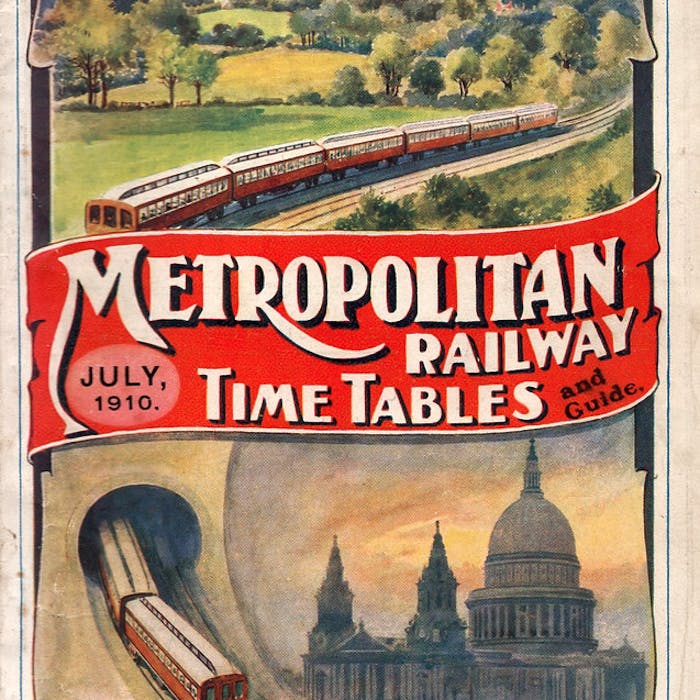
Metro-Land: railway suburbia immortalised by Betjeman
Metro-Land was a promotional name given to an area north-west of London, opened up by the construction in the early 20th century around the stations at the outer end of the Metropolitan Railway (later the Metropolitan Line) of the London Underground. Its significance was further reinforced by a 1973 BBC documentary film that was written and narrated by then Poet Laureate Sir John Betjeman.
In 1915, the Metropolitan Railway coined the term Metro-Land to describe a band of countryside just north-west of London, being brought into reach by an extension of the line, and marketed as a land of idyllic cottages and wild flowers. A semi-rural arcadia was offered to Londoners wanting to escape crowded conditions in the city. The campaign proved a roaring success.
Betjeman's film portrays snapshots of suburban life in the area, with a focus on quirky 'typically English' style and eccentricities
Director Edward Mirzoeff recalls that the programme was conceived over a lunch with Betjeman, after the two had collaborated on a previous BBC series called Bird's-Eye View. Metro-Land provides a series of vignettes in the suburbs of Metro-Land and is woven together by Betjeman's commentary - some of which is in verse. The film is also interwoven with black-and-white film shot from a MR train in 1910 and contemporary equivalents.
Betjeman describes these suburbs as a "Child of the First War, forgotten by the Second". As he travels in the film, he carries the original pamphlet guide to Metro-land from the 1920s.
Areas that form part of the Metro-Land territory include: Amersham in Buckinghamshire (where Betjeman visits High and Over (1929), a house designed by Amyas Connell in 'the modern style' that overlooked the town); Harrow School and Grim's Dyke, where lyricist W. S. Gilbert, (collaborator of Arthur Sullivan), drowned in a pond; and Neasden, which was caricatured as a boring and anonymous area in a 1962 issue of the magazine Private Eye. Betjeman describes Neasden as "home of the gnome and the average citizen" - a reference to the number of front-garden gnomes in suburbia.
The film was warmly received by critics, with journalist and heritage commentator Simon Jenkins writing a review in his own verse for the London Evening Standard: "For an hour he held enraptured/Pinner, Moor Park, Chorley Wood./’Well I’m blowed’ they said, ‘He likes us./Knew one day that someone should."
Further reading
Links to external websites are not maintained by Bite Sized Britain. They are provided to give users access to additional information. Bite Sized Britain is not responsible for the content of these external websites.
